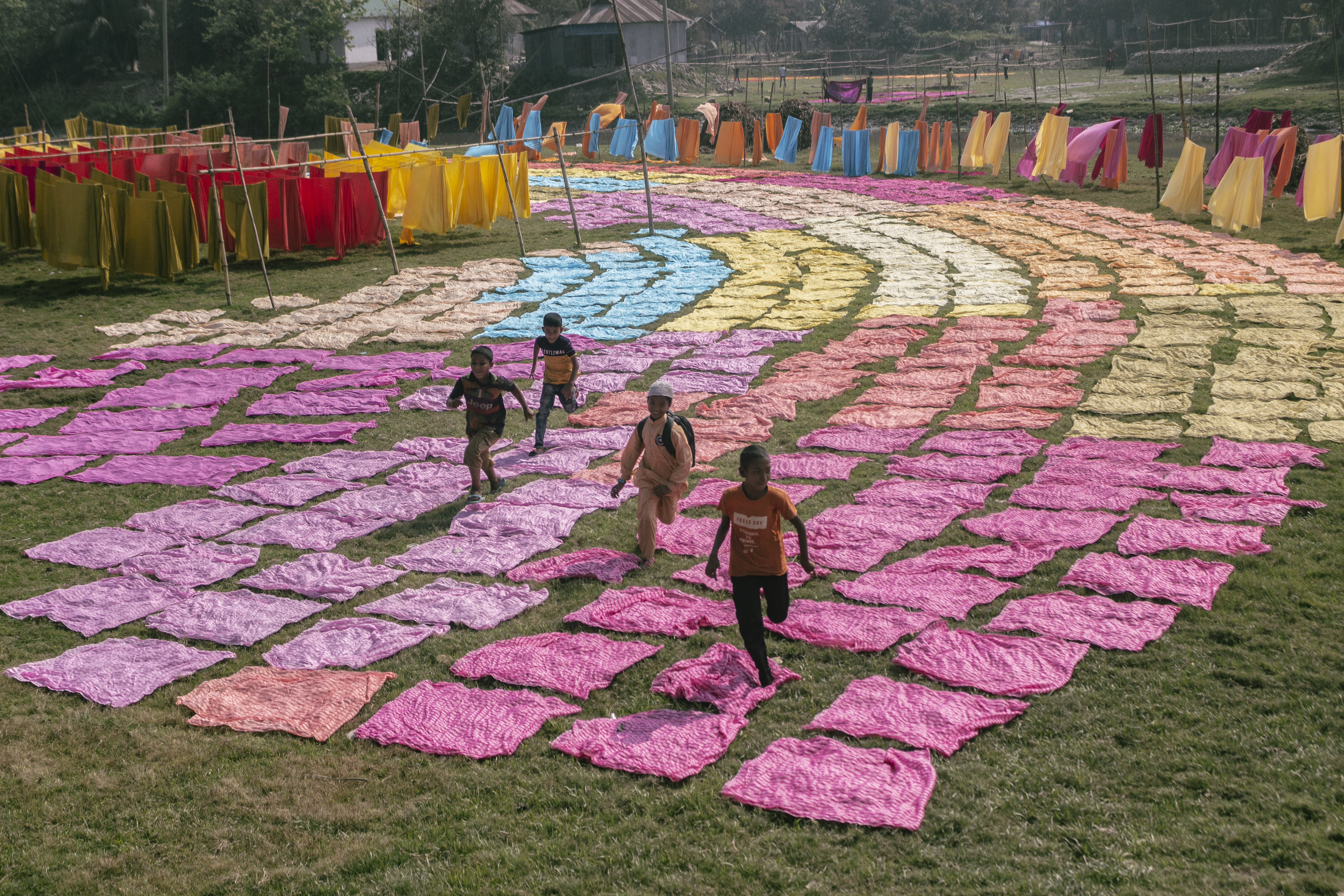Dye
 A dye is a colored substance that chemically bonds to the material to which it is being applied. This distinguishes dyes from pigments which do not chemically bind to the material they color. Dye is generally applied in an aqueous solution and may require a mordant to improve the fastness of the dye on the fiber.
A dye is a colored substance that chemically bonds to the material to which it is being applied. This distinguishes dyes from pigments which do not chemically bind to the material they color. Dye is generally applied in an aqueous solution and may require a mordant to improve the fastness of the dye on the fiber.The majority of natural dyes are derived from non-animal sources such as roots, berries, bark, leaves, wood, fungi and lichens. However, due to large-scale demand and technological improvements, most dyes used in the modern world are synthetically produced from substances such as petrochemicals. Some are extracted from insects and/or minerals.
Synthetic dyes are produced from various chemicals. The great majority of dyes are obtained in this way because of their superior cost, optical properties (color), and resilience (fastness, mordancy). Both dyes and pigments are colored, because they absorb only some wavelengths of visible light. Dyes are usually soluble in some solvent, whereas pigments are insoluble. Some dyes can be rendered insoluble with the addition of salt to produce a lake pigment. Provided by Wikipedia
-
1
-
2
-
3
-
4
-
5
-
6
-
7
-
8
-
9
-
10
-
11
-
12by Benner, Axel, Mansouri, Larry, Rossi, Davide, Majid, Aneela, Willander, Kerstin, Parker, Anton, Bond, Gareth, Pavlova, Sarka, Nückel, Holger, Merkel, Olaf, Ghia, Paolo, Montserrat, Emili, Kaderi, Mohd Arifin, Rosenquist, Richard, Gaidano, Gianluca, Dye, Martin J.S., Söderkvist, Peter, Linderholm, Mats, Oscier, David, Tvaruzkova, Zuzana, Pospisilova, Sarka, Dührse, Ulrich, Greil, Richard, Döhner, Hartmut, Stilgenbauer, Stephan, Zenz, ThorstenGet full text
Published 2014
Get full text
Get full text
Get full text
Get full text
Get full text
-
13
-
14